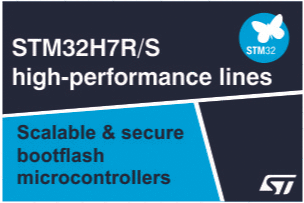
Electronics Maker’s Executive Editor, Vaishali Umderkar, speaks with Salil Raje of AMD to mark the 40th anniversary of the FPGA—a pivotal invention that transformed semiconductor innovation. From Ross Freeman’s revolutionary idea in 1985 to today’s AI-accelerated adaptive SoCs, this interview explores AMD’s contributions, milestones, and vision for the future of edge computing, embedded systems, and AI. Join us as we look at how FPGAs continue to redefine what’s possible across industries and intelligent systems.
Q1. This June marks the 40th anniversary of the FPGA. What does this milestone signify for AMD and the broader semiconductor industry?
The 40th anniversary of the FPGA is not just a technical milestone—it is a moment to reflect on a transformative journey that has reshaped the semiconductor landscape. When Ross Freeman, one of the co-founders of Xilinx, introduced the idea of making hardware as flexible as software, he paved the way for a new era of innovation. This vision helped led to the development of the fabless semiconductor model andaccelerate product innovation. . Today, AMD carries that legacy forward, having shipped over 3 billion FPGAs and adaptive SoCs, and serving more than 7,000 customers worldwide. The core principles of flexibility and programmability remain central to our innovation strategy.
Q2. Can you reflect on the invention of the FPGA by Ross Freeman and how it has evolved over the past four decades?
The invention of the XC2064 FPGA in 1985, featuring just 64 logic blocks and 85,000 transistors, was revolutionary for its time. Over the past four decades, that initial concept has evolved into highly integrated platforms combining programmable logic with ARM processors, video engines, RF, DSPs, and even AI engines. Today, AMD’s most advanced devices incorporate over 100 million logic cells and more than 138 billion transistors, enabling entire systems to be implemented on a single chip.
Q3. AMD has played a major role in FPGA innovation. What are some of the key milestones in your FPGA product journey?
AMD has driven many industry firsts throughout its FPGA history. After launching the first commercial FPGA, the Virtex family brought the introduction of embedded RAM and DSP capabilities – critical for wireless infrastructure. In the early 2000s, we delivered the first FPGA with integrated SerDes. The Zynq family, launched in 2012, combined Arm-based processing with programmable logic for the first time, opening new possibilities for embedded systems. Most recently, we launched the Versal series with hardened AI Engines and programmable network-on-chip (NoC), pushing the boundaries of heterogeneous compute for edge AI.
Q4. How has AMD’s FPGA portfolio evolved to meet the changing demands of modern workloads, especially in AI and embedded systems?
Modern workloads require real-time processing, high integration, and energy efficiency. AMD has responded by evolving from pure-play logic devices to highly integrated adaptive SoCs. These SoCs combine programmable logic and ArmCPUs with NPUs, DSPs, and video engines in a single chip, enabling developers to run complete applications—from sensor ingestion to AI inference and control—on one device. This is especially beneficial for use cases in edge AI, autonomous systems, and industrial automation.
Q5. How important has software been in driving FPGA market expansion?
Software is critical to unlocking the true potential of FPGA hardware. AMD has invested heavily in EDA and software tools to make FPGA development more accessible. Our toolchains are as advanced and sophisticated as our silicon, enabling software and system developers to build optimized, accelerated applications more efficiently than ever before.
Q6. Can you highlight some of the capabilities and benefits of AMD’s Vivado and Vitis software platforms?
Vivado offers high-level synthesis, ML-based optimization, and IP integration that significantly reduce development time and increase performance. Vitis enables a more abstracted development flow, allowing developers to easily deploy AI inference on FPGAs. One unique advantage AMD offers is the ability to develop and test AI models on a Ryzen AI-powered workstation and then deploy them seamlessly onto edge devices using the same Vitis tools.
Q7. AI at the edge is a hot topic. How is AMD addressing the growing demand for low-latency AI processing at the edge?
We believe the edge is on the cusp of its own “ChatGPT moment.” Unlike data center AI, edge AI demands ultra-low latency, power efficiency, and real-time responsiveness. AMD’s adaptive SoCs, including our Versal AI Edge Gen 2 family, are designed to meet these demands by integrating NPUs, sensor interfaces, and real-time processing logic in a compact, scalable form factor—enabling end-to-end acceleration of AI-driven workloads and intelligent decision-making at the edge.
Q8. Can you share examples of real-world edge AI applications powered by AMD FPGAs or adaptive SoCs?
AMD’s technologies are already enabling cutting-edge applications across industries. NASA uses our Virtex FPGAs in Mars Rover image processing and Versal AI Edge SoCs are bring accelerated AI inferencing to space applications. Subaru is leveraging Versal AI Edge Gen 2 for next-gen ADAS. SICK employs KintexUltraScale+ FPGAs in factory inspection systems, and JR Kyushu in Japan uses Kria SOMs for real-time rail inspection. In healthcare, Clarius utilizes Zynq UltraScale+ SoCs in AI-powered portable ultrasound devices.
Q9. How are AMD’s solutions enabling innovation in sectors like automotive, industrial automation, healthcare, and space?
These sectors require deterministic, low-latency performance and tight integration across hardware and software. AMD adaptive SoCs enable full application acceleration—from sensor data capture and pre-processing to inference, actuation and post-processing—all within a single chip. This approach is ideal for automotive control, robotics, real-time medical imaging, and even space-grade mission-critical systems.
Q10. What are the biggest challenges developers face when building edge AI solutions, and how does AMD help address them?
Key challenges include minimizing latency, managing power constraints, and integrating diverse workloads. AMD addresses these through unified development environments like Vitis, robust model portability from PC to edge, and scalable SoC architectures that reduce complexity and streamline time to deployment.
Q11. Looking ahead, what’s next for FPGA and adaptive computing technology over the next decade?
The next decade will bring even greater integration through chiplet-based architectures, 3D stacking, and advanced packaging. AMD is already building devices using a flexible mix of process nodes, with new architectural innovations introduced alongside each. Our mission remains clear: to increase functionality within smaller form factors while maximizing performance and cost-efficiency for customers.
Q12. How is AMD preparing to lead the next wave of innovations in edge AI, robotics, 6G, and scientific computing?
AMD is combining software-defined architecture with hardware innovation to enable the next era of intelligent systems. Our Versal AI Edge Gen 2 devices, featuring integrated CPUs, NPUs, DSPs, and programmable logic, are built for real-time AI workloads across robotics, 6G, climate science, and space exploration. We believe we’re uniquely positioned—with the tools, silicon, and roadmap—to lead innovation for decades to come.






